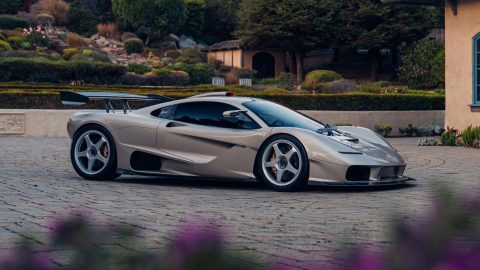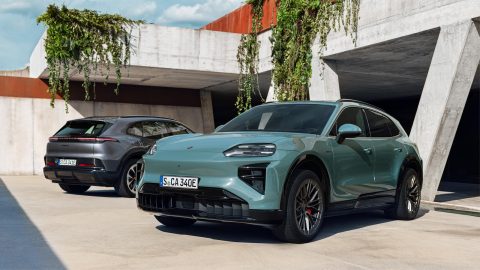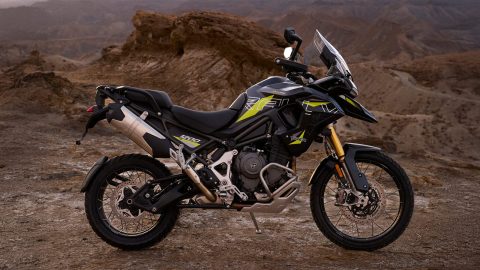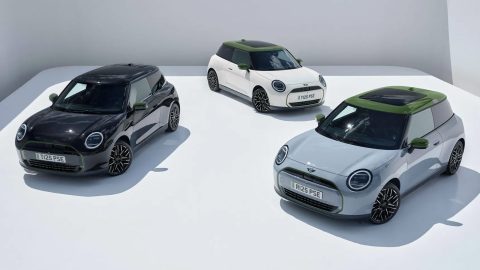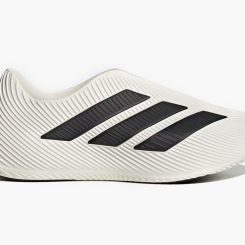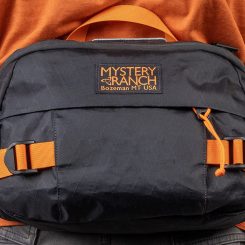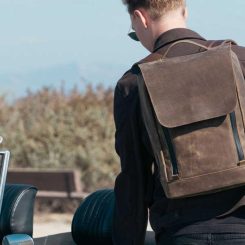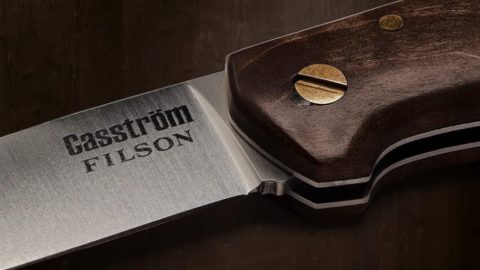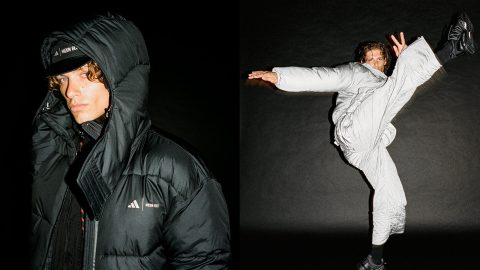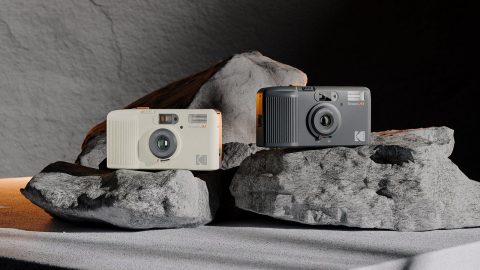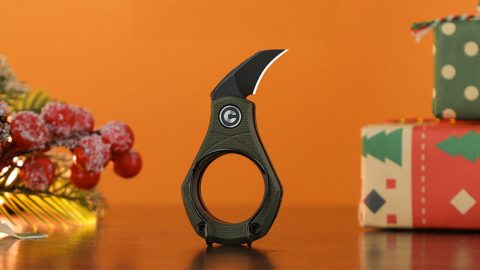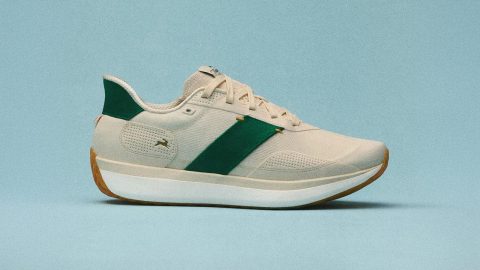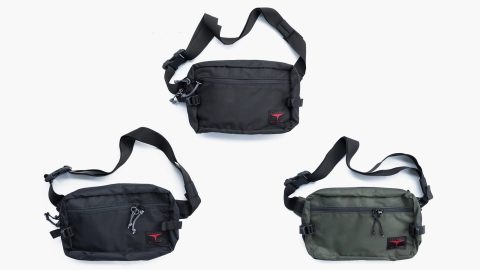As an automotive identity, the van is often parked in the shadow of the pickup truck and SUV. Nor is it always seen with the same hip, ironic nostalgia of the station wagon. The van, no matter the configuration, is overlooked by many as just a boxy vehicle carrying the day shift’s worth of online purchases. Yet, like hairstyles and slang words, the van has never stopped evolving within its wheelbase.
At its core, the van provides a means of transportation with a seemingly endless range of potential under its covered roof. Throughout the van’s history, its transported pioneers, hippies, hipsters, rock stars, laborers, bank robbers, influencers, and anyone looking to escape the confines of their personal definition of “society.”
For this article, we will be shining a light on some of the iconic vans that helped move society forward while becoming vessels of counterculture, trends, and wholesome family values.
The Covered Wagon, the Origins of Van Life
The name we give these vehicles comes from the word Caravan, a fact so obvious one can’t feel bad for missing it. Before trucks, cars, and vans, we had literal horse-powered carriages, stagecoaches, and wagons. Some may disagree, but the covered wagons used by pioneering settlers to head out west are considered the first examples of what is referred to as “van life.” Brave settlers packed up their lives and left everything and everyone they knew behind to head west into the unknown under the modern equivalent of a hashtag movement called Manifest Destiny.
Born to Deliver
Before we started calling them vans, they were called “delivery.” At the turn of the last century, the only vehicles that could technically qualify as a van were panel-covered vehicles built on sedans or truck chassis. In 1917, Ford introduced the Model TT, its first one-ton truck chassis. This heavy-duty Tin Lizzie allowed for customization to turn the Ford Model TT into whatever the customer needed, whether it be a tanker truck, box truck, transport truck, flatbed, or panel (van) truck. Today, the Ford F-Series and every Ford-branded commercial vehicle can trace its roots back to the humble Model TT.
At the dawn of the roaring 20s, the Ford Model TT would go into production overseas in Cork, Ireland. This was the first factory Henry Ford purposely built outside the United States. But, more importantly, this decision to produce the same truck in two different parts of the world created a separate branch in the Ford family tree resulting in two successful bloodlines of Ford vans.
The Ford E-Series and Ford Transit
Today we see the Ford Transit on American soil doing the day’s work alongside its larger sibling, the Ford E-Series. However, the Ford Transit van is relatively new in the United States, with production starting in 2014. Before that, the only long-running Ford commercial van was the E-Series, aka the Econoline.
Ford introduced the E-Series Econoline in 1960 as a ’61 model to compete against Volkswagen’s Transporter van. At the time, Ford was trying to dig itself out of the massive money pit created by the Ford Edsel and focused on creating economic vehicles. So, the first-generation Econoline was based on the Ford Falcon’s wheelbase and adopted a front-mid-engine layout using straight-six engines.
The first-generation Ford Econoline was slow, but having the engine placed behind the front axle allowed for a flat floor in the back to maximize cargo space within its 90-inch wheelbase. By 1968, the Ford Econoline had grown and became the first full-size van.
Across the pond, the United Kingdom would see its own version of a compact but versatile cargo van by Ford in 1965 called the Transit. This van holds the honor of being the first Ford vehicle developed in Europe. Unlike its American E-Series cousin, the Ford Transit became an automotive icon in Europe and was dubbed the “backbone of Britain.” One key factor to its popularity was a van that handled like a car thanks to its sedan drivetrain.
The Ford Transit’s handling made it easy to drive, so easy that it became the go-to workhorse in all professions, including illegal ones. One of the van’s claims to fame occurred in 1972 when a spokesman for Scotland Yard stated that the Ford Transit van was used in 95 percent of bank raids. That same year, Ford unveiled the Transit “Supervan,” which boasted a 5.0-liter V8 allowing the van to shove air out of the way to a top speed of 150 mph.
While the Ford Econoline and Ford Transit van left their mark on society and sales figures, they failed to reach the heights of international pop culture like the Volkswagen Type 2 Microbus.
The Psychedelic Volkswagen Type 2 Microbus
You can’t talk about vans and van culture without mentioning the Volkswagen Type 2 Microbus. The tiny van born in post-war Germany that became a staple of transportation for decades in Mexico, Brazil, Argentina, and Australia. Having Volkswagen plants in these countries producing the VW van meant that it wasn’t seen as an import but as one of their own.
When Volkswagen developed the Type 2 van in 1947, it was the second production vehicle built by Volkswagen after the Beetle. In the United States, Volkswagen started importing them during the 1950s. The first generation of the air-cooled, rear-engine van provided less than 50 horsepower from a modest flat-four-cylinder engine. However, the cost of a new VW van was far cheaper than a big wood-paneled American station wagon. As a result, during the economic recession of the late 1950s, the frugal Microbus gained consumer popularity.
This popularity would continue into the 1960s when the van became the ideal means of transport for the coming-of-age baby boomers who needed cheap wheels carrying their instruments, surfboards, small business supplies, and other miscellany.
The VW bus, easy to fix, cheap to run, and endearing styling, made it the ideal vessel to transport the counterculture throughout the 1960s that would be best summed up by one van in particular – the Light Bus. In the summer of 1969, Dr. Bob Hieronimus was commissioned to paint a VW bus by friends to be used as a tour van for the Baltimore-based rock band Light.
When the van’s psychedelic paint scheme arrived at Woodstock that same year, the Light Bus became the poster vehicle photographed by Rolling Stone, Life magazine, and the Associated Press. It summed up the moment of the 1960s and a generational love of the Volkswagen Microbus – a love that would continue for decades.
In Brazil, the Volkswagen “Kombi” production continued until 2013, ending a 78-year-long production life. Today, the value of a pristine first-generation Volkswagen Type 2 Sunroof Deluxe with 23 windows doesn’t drop below six figures.
The Far-Out 1976 Dodge Street Van
By the mid-1970s, the van had become a rolling canvas of expression. Utility vans designed to carry lumber and drywall were now hauling wall-to-wall shag carpeting, water beds, and wood-cased amplifiers to blast the latest Led Zepplin and Black Sabbath albums on 8-track. Chrome-plated side exhaust pipes and outrageous air-brushed designs were just the tip of the iceberg in customizations in the far-out van craze of the 70s.
It became so popular that in 1976 Dodge decided to cash in on the trend by releasing a unique appearance package for the B-Series Tradesman van called the Street Van. This package came with a bespoke Street Van logo, chrome bumpers, smaller side mirrors, and simulated wood grain trim in the interior. In addition to five-slot chrome wheels with white-lettered off-road style tires. A Dodge Street Van optioned with a truckin’ 440 ci V8, and you had the makings of a van that’s ready for some rockin’.
Family Values – The MiniVan
If the 60s were a party and the 70s a hangover, the 80s were the Monday when everyone went back to work. When the Street Van ended, the minivan began. In 1983, Chrysler changed how kids saw the passing landscape when it unveiled the Dodge Caravan / Plymouth Voyager.
While predecessors of the minivan date back to the 1930s with the aerodynamic 1936 Stout Scarab, the Dodge Caravan is the minivan that ignited a trend and cemented its classification. Spearheaded by Lee Iacocca, the Caravan was designed to handle and sort of look like a car and sell for a reasonable, family-friendly price.
Many gen-X and millennials can reflect fondly on core memories of riding in the back of a minivan. Gameboys, car seats, and toys included with fast food combo meals. I myself spend a good chunk of my grade school days throwing Cheetos at siblings from the third row of my mother’s then-new 2003 Kia Sedona minivan. The same van I would later borrow with a freshly laminated driver’s license and terrorize the streets at 110 mph thanks to its torquey 3.0-liter V6.
When Van Life Went Viral
Until now, we’ve seen how people have used vans to get to and around with everything they needed. However, it wasn’t until 2011 that van life became a social media trend. It started when Foster Hunting decided to quit his art designer job at Ralph Lauren in New York City and packed up his life into a 1987 Volkswagen T3 Syncro van.
Hunting started using the hashtag #vanlife on Instagram whenever he posted a photo of another van living the life of a modern nomad. Like a fire emblem caught in a breeze, the hashtag caught on and spread like wildfire. Fast forward to 2020, and van life was no longer a way to avoid paying a mortgage or extending a camping trip – it was an escape.
During the Covid-19 pandemic of 2020, RV and camper trailer sales went up. People stuck in the city or fear of the doomsday-like news headlines saw the van as a cost-effective means to literally head for the hills armed with a face mask and wholesome jug of hand sanitizer.
The Modern Van
Today it’s a rarity if one doesn’t spot a Mercedes-Benz Sprinter van wearing Amazon livery. But, of course, Amazon delivery vans are more common these days than U.S. postal trucks. Moreover, when the Sprinter van debuted in 1995, it became the modern go-to for high-dollar camper conversions complete with four-wheel-drive and granite tabletops.
In 2021, Ford announced the production of its first all-electric variant of the Transit called the E-Transit. This news came shortly after celebrating the one-millionth Ford Transit van built in America since 2014. Furthermore, Volkswagen is bringing back the Microbus in 2024 as a retro-charged electric vehicle dubbed the ID. Buzz, only at a price much higher than its great-grandfather.
Within the Van Life community, there is a separate variant that emphasizes stealth. These vans are designed to blend into parking lots, hiding in plain sight to fool noisy, assumptions eyes. After all, living in a van down by the river is not always a sunny sky picnic.
The Beauty of the Van
Even the meekest, rusty, oil-burning van can still serve a purpose. Whether a package mule, a mobile shelter, a five-star crash test-rated family hauler, or a personalized means of expression, the van can haul, tow, and store it all.
That’s the beauty of a van. It can be anything we need it to be.



